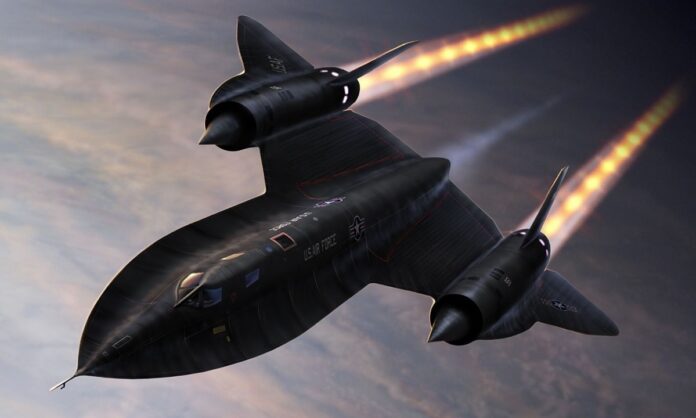The skies above were not just witness to the breathtaking dance of clouds and the warmth of the sun. They were also the battlegrounds of the Cold War, where technology, innovation, and strategic prowess were put to the ultimate test. In the realm of aviation, few machines could match the mystique and capability of the SR-71 Blackbird. Born out of secrecy and cutting-edge engineering, the Blackbird became an enduring symbol of American ingenuity, pushing the boundaries of what was possible and forever changing the face of reconnaissance. Join us as we delve into the captivating history of this legendary aircraft, a true marvel of the Cold War era.
Redefining Speed and Stealth
In the tumultuous era of the Cold War, the need for accurate and timely intelligence was paramount. The SR-71 Blackbird, developed by Lockheed’s Skunk Works division under the watchful eye of aviation pioneer Clarence “Kelly” Johnson, emerged as the answer to this pressing demand. What set the Blackbird apart from its contemporaries was its incredible speed and stealth capabilities.
Imagine hurtling through the sky at speeds exceeding Mach 3 – more than three times the speed of sound. The Blackbird’s astonishing top speed of approximately 2,200 miles per hour wasn’t just a technical marvel; it was a necessity to outrun any potential threats. The aircraft’s sleek design, coupled with its advanced materials, allowed it to generate less friction and heat, enabling it to operate at such mind-boggling velocities. This not only made it nearly impossible for enemy interceptors or surface-to-air missiles to catch up but also contributed to the aircraft’s iconic shape – an elongated fuselage with sharply pointed nose and forward-swept wings, reminiscent of a bird of prey.
A Game of Cat and Mouse
The Blackbird’s speed was just one element of its intricate dance with danger. It was also equipped with state-of-the-art stealth technology, enabling it to fly at altitudes and speeds that pushed the boundaries of physics while avoiding detection. The aircraft’s distinctive dark color, designed to dissipate heat generated from high-speed flight, further contributed to its enigmatic allure. Blackbird pilots often joked that the aircraft’s color was the result of a mix of radar-absorbing paint and the tears of their enemies’ radar operators.
But flying at the edge of space – sometimes reaching altitudes above 85,000 feet – presented a new set of challenges. The air was thin, and temperatures plummeted to staggering lows. This necessitated the use of cutting-edge materials, including titanium, which not only withstood the harsh conditions but also expanded and contracted with the changing temperatures, ensuring the aircraft maintained its structural integrity.
The Eyes of the Nation
The primary mission of the SR-71 Blackbird was reconnaissance – gathering critical intelligence through aerial observation. Equipped with a variety of sensors and cameras, the Blackbird could capture high-resolution images over vast distances, making it an indispensable tool for monitoring military activities, verifying arms control agreements, and providing critical information to decision-makers.
During the Blackbird’s operational years, its importance in intelligence gathering was undeniable. It provided the United States with vital information during events such as the Cuban Missile Crisis, the Yom Kippur War, and countless other moments that shaped the course of history. Its ability to fly deep into hostile territories and return with invaluable data gave the United States a significant advantage on the global stage.
Operational Secrecy and Unveiling the Legend
For years, the Blackbird operated in utmost secrecy, often evading the prying eyes of the public. It wasn’t until July 28, 1976, that the world got its first official glimpse of the enigmatic aircraft. On that day, two SR-71s completed a transcontinental flight, breaking records and capturing the imagination of aviation enthusiasts worldwide. The iconic Blackbird silhouette was no longer a secret confined to classified documents; it was now soaring through the skies for all to see.
Despite its unveiling, the Blackbird continued to be a source of fascination and intrigue. Its speed, design, and performance capabilities remained awe-inspiring, and its legacy persisted even as technology advanced. The aircraft’s retirement in 1998 marked the end of an era, but its impact on aviation, reconnaissance, and the public’s perception of what was achievable endured.
A Timeless Legacy
The SR-71 Blackbird was more than just a marvel of engineering; it was a symbol of human ingenuity, daring to push the boundaries of what was possible. Its legacy lives on, not only in the annals of aviation history but also in the collective imagination of those who were captivated by its mystique. Today, remnants of the Blackbird can be found in museums, proudly displayed as a testament to its contribution to intelligence gathering and technological advancement.
As we reflect on the Cold War era and the incredible achievements born from its challenges, the SR-71 Blackbird stands as a beacon of innovation. Its sleek design, unparalleled speed, and unmatched reconnaissance capabilities continue to inspire generations of aviation enthusiasts, reminding us that the sky is never the limit when it comes to human achievement.
In the end, the Blackbird’s journey from classified secrecy to global recognition is a story of determination, innovation, and the pursuit of excellence. It serves as a reminder that even in the face of adversity, humanity’s ability to create the extraordinary knows no bounds. So, the next time you gaze up at the sky and see a streak of speed and brilliance, remember the SR-71 Blackbird and the indelible mark it left on both aviation history and the pursuit of the unknown.
























